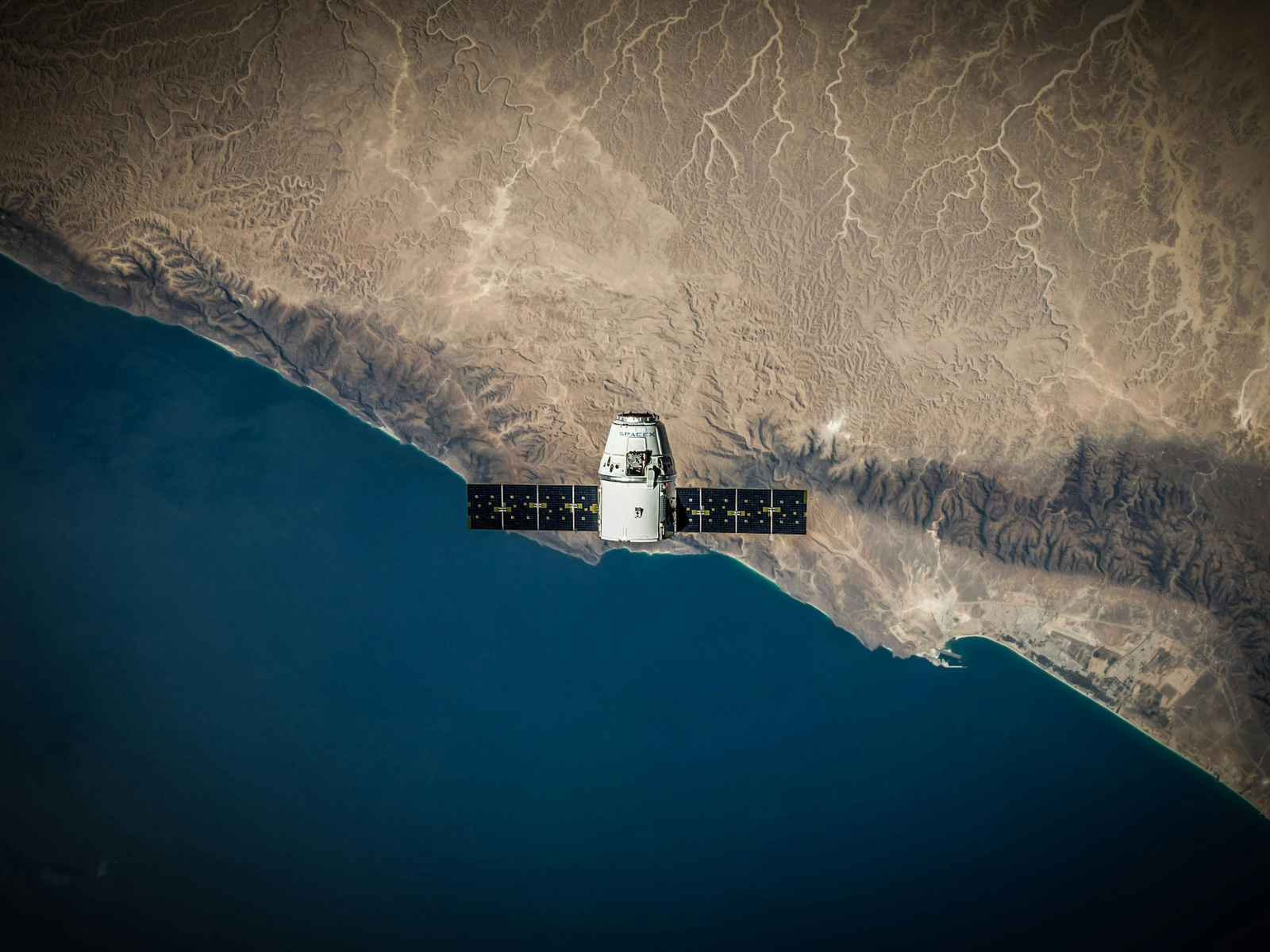Developing connected devices for transportation? Let’s talk about what’s speeding toward us on the innovation highway. By 2030, satellite connectivity will transform the transportation industry in ways that might not be on your product roadmap yet. From dramatically cheaper satellite hardware (finally!) to new low-earth orbit constellations, these innovations are picking up speed. Intelligent network switching and unified data platforms make satellite connectivity essential for transportation products that want to stay in the race.
Why Satellite Matters for Fleet Management
The transportation industry has been stuck in the connectivity dark ages. Fleet operators are losing visibility of their vehicles at an alarming rate; 44% report losing track of vehicles monthly, resulting in revenue losses exceeding $1 million annually for logistics companies.
What makes transportation unique is its mobile nature across diverse geographies. Unlike fixed applications, vehicles regularly traverse rural highways, mountain passes, international borders, and urban canyons. This mobility creates distinctive challenges: cross-border roaming complications that trigger unpredictable costs, regulatory compliance requirements that differ by jurisdiction, and cargo monitoring needs that can’t tolerate connectivity gaps.
As your customers travel into more diverse operating environments, they’re demanding products with built-in resilience against these connectivity failures. The market is clearly signaling that connectivity must evolve to be a continuous experience that persists across all environments.
The convergence of satellite and cellular connectivity technologies creates a new technical foundation that transportation product designers need to understand. With standardized hardware interfaces, intelligent network-switching, and unified data management, converged connectivity is rapidly becoming the expected standard in transportation rather than a premium option. This shift opens up new opportunities more reliable connectivity, but it also means current designs without satellite capabilities risk becoming obsolete.

Five critical satellite technology developments that will shape your product strategy
This inside scoop should guide product developers as they plan how to adapt to advances in satellite technology. Lucky for you, we’ve got the roadmap you need to future-proof your products. Let’s unpack some of the advancements in satellite connectivity that are accelerating innovation in transportation IoT.
LEO constellations reshape hardware design (2025-2033)
For transportation companies operating across diverse geographies, Low Earth Orbit (LEO) satellite constellations are eliminating the concept of coverage “blind spots.” The rapid deployment of Low Earth Orbit (LEO) satellite constellations is reshaping connectivity possibilities for IoT and embedded devices. Recent forecasts project an average of over 3,700 satellites launched annually between 2024 and 2033; that’s approximately 10 satellites per day! It’s particularly important to note that just four commercial broadband non-geostationary orbit (NGSO) mega-constellations (Starlink, Kuiper, G60, and GuoWang) will account for 65% of the satellites deployed in this period.
The rapid increase in satellite launches creates both opportunities and challenges for hardware manufacturers. Companies making satellite connection (non-terrestrial network) chips and modems are becoming more important as device makers integrate satellite connectivity into their products. Two approaches are emerging: using specialized components in phones to process satellite signals or upgrading satellites to communicate using standards that work with regular phones. The satellite-upgrading approach faces regulatory hurdles about signal usage, leaving room for the chip-first solution to advance quickly because it’s easier to bring to market. For connected device manufacturers, you will need to consider how to include versatile radio components that can connect with these expanding networks while maintaining power efficiency and cost effectiveness.
5G meets satellite in new chipsets (2025 and beyond)
The integration of 5G with satellite networks aims to provide 5G connectivity directly from space. We’re already seeing concrete progress, with companies like AST SpaceMobile establishing 5G voice and data connections from standard unmodified smartphones directly to LEO satellites, while Starlink plans to introduce voice and data capabilities for existing LTE phones in 2025.
For device manufacturers, this combination means redesigning antennas and chipset architectures. The main challenges will be creating components that can seamlessly switch between ground-based and satellite networks, handle different latency profiles, and optimize power usage. Converged connectivity products offer a chance to build more integrated hardware that uses both cellular and satellite connectivity within a single system.
Miniaturization enables new form factors (2025 and beyond)
The trend toward smaller, more efficient satellite components is changing how connectivity hardware integrates into vehicles. The miniaturization of satellites, often referred to as “nanosatellites” or “cubesats,” is making them cheaper to produce, faster to develop, and less costly to launch than traditional satellites, democratizing access to space for a wider range of organizations.
This trend toward minaturization applies to ground equipment too. New modular designs, like Notecard Cellular, serve as basic building blocks that fit easily into many types of IoT devices. Connection standards like the M.2 edge connector are becoming common across both cellular and satellite modules, making hardware design simpler. For product designers, this creates opportunities to build smaller, more energy-efficient devices with multiple connection options without adding much size, weight, or cost. When paired with advances in 3D printing and materials science, these compact components allow for new device shapes and uses that weren’t possible before.

Edge computing moves to orbit (2026)
The concept of edge computing is extending beyond terrestrial networks into space, giving fleet operators new options for managing the massive data volumes generated by connected vehicles. Companies like KaleidEO are planning to launch satellites equipped with edge computing capabilities by 2026. These satellites will be able to process data directly in orbit, significantly reducing latency and bandwidth usage while enabling more efficient data handling for applications such as Earth observation and environmental monitoring.
Similarly, a converged connectivity system might use cellular networks for data-heavy tasks when possible, and satellite connections for important but less data heavy tasks when cellular isn’t available. Product designers should think about how this edge computing in space could enable new ways to process data, compress information, and selectively send only what’s needed.
AI rewrites networking protocols (2026)
Artificial Intelligence is now being built into satellite systems, creating new options for intelligent networking and improving communication protocols. AI and machine learning are used in both space systems and ground stations, helping with autonomous operations, improved situational awareness, and faster decision-making. For fleet managers, this allows for smarter data routing, network control, and the ability to predict maintenance needs before problems occur.
Looking ahead, we can expect generative AI to influence satellite technology. Promising uses include designing better satellites, AI adjusts features like shape, size, and setup to match mission needs to create lighter and less expensive designs. AI can also improve image analysis, signal processing, and finding unusual patterns by pulling important information from complex data. For IoT product developers, this means creating systems that can work with AI-powered networks and potentially change how they send data to take advantage of AI-enhanced routing and processing abilities.
Mapping the future of your connected fleets
The innovations we’ve explored, from LEO constellations to AI-driven networking, are the high-octane fuel powering the next five years of IoT development. The manufacturers who integrate hybrid connectivity solutions into their development won’t just navigate the coming technological shifts; they’ll lead the fleet!
Don’t let your connected products run out of gas before they even hit the open road. Download our comprehensive white paper on hybrid connectivity for fleet management and get the roadmap to the technical foundations driving your next generation of products.
